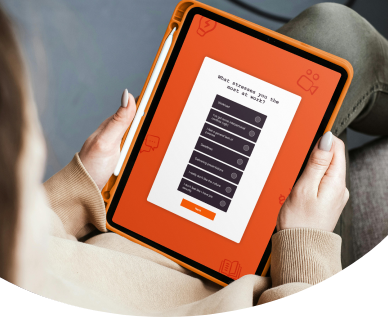We’ve all felt that awkward tension when a colleague asks about your weekend plans and you’re not sure how much to share. Or when someone invites you for after-work drinks and you freeze, wondering if accepting crosses some invisible professional line. In some industries, there seems to be a cultural rule that if someone is your colleague, they shouldn’t really know about your personal life. Keep it professional. Keep it distant. Keep it safe.
But is that really the healthiest approach?
In a recent conversation between Simon and Dr. Sara Kuburic—a therapist who specializes in workplace dynamics and teacher of our course, How to Handle Conflict at Work—they explored this exact tension. And, according to Sara, the challenge isn’t whether to befriend coworkers. It’s how to do it with intention, awareness, and healthy boundaries.
Here’s what we learned.
The Truth: All Work Relationships Are Personal
Let’s start by dismantling a myth. “All relationships are personal relationships,” Sara says. Even the most buttoned-up, strictly professional dynamic involves human connection, emotional dynamics, and personal investment. The question isn’t whether work relationships are personal—they always are. The real question is: what kind of personal relationship do you want to cultivate?
Sara’s own philosophy is refreshingly honest: “In my ideal world, I would work with all my best friends.” When choosing projects, she asks herself fundamental questions like: “Do I want to spend time with you? Do I find the dynamic meaningful enough for us to spend 40 hours, 100 hours, 200 hours working together on this project?”
Think about that for a moment. If you’re going to spend more waking hours with colleagues than with your own family, shouldn’t you actually enjoy their company?
The difference between work friendships and other friendships isn’t that one is “personal” and the other isn’t. It’s that the boundaries, expectations, and needs are different. And that’s where things get complicated.
How to Test the Friendship Waters (Without Making It Weird)
One of the trickiest aspects of workplace relationships is figuring out where you stand. You might think you’re developing a genuine friendship, only to realize the other person views you strictly as a colleague. So how do you read the room before you accidentally overstep?
Sara recommends testing it out casually and paying attention to the signals. Here are some practical ways to gauge interest:
Extend low-pressure invitations. Ask if they want to grab coffee during lunch or join you for a drink after work. These are casual enough that declining doesn’t feel awkward, but accepting signals openness to a more personal connection.
Pay attention to their responses. If someone consistently says no to social invitations without offering alternatives, that’s information. If they always give one-word answers when you ask “How was your weekend?” they’re setting a boundary—not because they dislike you, but because they prefer to keep work and personal life separate.
Accept the answer without taking it personally. As Sara puts it, “It can feel a little brutal, but now you know.” Some people are looking for friends at work; others aren’t. Neither approach is wrong. The key is reading the signals and respecting what you discover.
This testing phase isn’t about playing games or being manipulative. It’s about reading social cues and respecting people’s boundaries before you invest emotionally in a relationship that might not be reciprocated.
The Trust Factor: Watch for Ulterior Motives
Here’s an uncomfortable truth about workplace friendships: they come with a layer of uncertainty that friendships outside work don’t have. “Are they being friends with you because they want a promotion?” Sara asks. “Are they being friends with you because they need something from you?”
This isn’t cynicism. It’s realism. Work involves hierarchies, politics, competition for resources, and advancement opportunities. Sometimes what feels like friendship is actually strategic networking. And that’s genuinely difficult to navigate.
So how do you distinguish between authentic connection and professional calculation?
Look for consistency over time. Real friendship remains steady regardless of whether you can offer something. If someone is only warm when they need a favor or distant after they’ve gotten what they want, that reveals their true motivation.
Notice if they’re interested in you as a person. Do they remember details about your life? Ask follow-up questions about things you’ve shared? Show curiosity about who you are outside your job title? Genuine friends care about the whole person, not just the professional persona.
Trust your gut. If something feels transactional, it probably is. Pay attention to that discomfort rather than dismissing it.
The reality is that many work relationships exist in a gray area. They’re somewhat genuine but also somewhat strategic. And that’s okay, as long as you’re aware of it and adjust your expectations accordingly.
The Non-Negotiable: Never Bond Over Negativity
If there’s one hard rule Sara emphasizes, it’s this: “No relationship should be founded on badmouthing other people.”
We’ve all seen it happen. Two people connect by complaining about their boss. Or gossiping about a difficult colleague. Or competing to share the most outrageous story about someone who isn’t in the room. And in the moment, that shared frustration can feel like bonding.
But it’s not. It’s a false foundation that will eventually crumble.
“People can really connect by hating on someone, by hating their boss, by being really upset,” Sara says. She understands it might even be a starting point. But if you don’t want your relationship based on gossip or simply disliking another person, you need to redirect the conversation.
Her suggested script is direct but kind: “Hey, I totally understand why you’re upset, but I don’t feel comfortable talking about another coworker that way.”
Will it be uncomfortable? Yes. But it’s also how you establish yourself as someone with integrity—someone who doesn’t participate in the toxic alliances that can make workplaces miserable.
Sara warns that this is how we “unintentionally form teams and alliances, and it becomes this really intense, complex thing that ‘you can’t be friends with Billy because you’re friends with Joel.'” Sound familiar? It’s high school dynamics in professional clothing. And it’s time to move past it.
The better approach: If you’re genuinely upset about a workplace issue, address it directly with the person involved or escalate it to HR if it’s serious. Don’t let your workplace friendships become echo chambers of negativity.
Making It Work When Everyone’s Remote
The rise of remote work has added another layer of complexity to workplace friendships. As Simon points out, quoting violinist Isaac Stern: “Music is what happens between the notes.” In a work environment, trust is what happens between the meetings—in the hallway, walking out of the conference room, bumping into each other and saying, “Oh, I meant to tell you something.”
These micro-moments build relationships and trust. And in a remote environment, they simply don’t exist unless you create them intentionally.
Sara’s advice is to treat remote work relationships like long-distance relationships—they require extra effort and intentionality:
Over-communicate tone in messages. Add emojis to clarify how you mean something. Make messages slightly longer to provide context. What seems clear to you can easily be misinterpreted by someone reading without the benefit of your facial expressions or tone of voice.
Schedule video calls when you feel distant. If you sense a relationship cooling or communication feeling strained, suggest a quick video chat. Seeing someone’s face rebuilds connection in ways that text never can.
Create the “between the meetings” moments. Send a quick message after a meeting: “That was a really interesting comment—it made me think of this.” Share a relevant meme. Drop a virtual thumbs up. These tiny gestures matter.
Check in with genuine curiosity. It’s easy to check in when you’re in the same space and notice someone looks tired or stressed. Make that same effort virtually. A simple “How are you doing?” can make someone feel seen.
As Sara puts it: “We all just want to feel seen and heard, and sometimes it’s as easy as acknowledging someone.” And yes, she genuinely recommends sending memes. “All the best coworkers send each other memes. It’s just a really fun bonding experience.”
The key is recognizing that remote relationships won’t develop organically. You have to be deliberate about creating connection.
Setting Boundaries Without Being an Asshole
So you’ve decided to befriend a coworker, but you still need boundaries. How do you maintain them without coming across as cold or difficult?
Sara’s answer comes down to two things: what you say and how you say it.
“Sometimes what tips the scale from being firm to being an asshole is the extra eye roll or the really harsh tone or the crossing of the arms,” she explains. Body language and tone matter as much as your actual words.
Before setting a boundary, check yourself:
- What’s your facial expression?
- What’s your tone—calm and matter-of-fact, or sharp and defensive?
- What’s your body language communicating?
Make sure it’s an actual boundary, not just a preference. Boundaries are about protecting your wellbeing, time, or values. Preferences are just how you like things done. Know the difference. A boundary might be: “I don’t discuss my personal life at work.” A preference might be: “I’d rather you text than call.” The first deserves firm protection; the second deserves flexibility.
Be honest and direct without insulting. You can be clear without being cruel. “I need to focus on this project, so I can’t chat right now” is firm but respectful. “I’m busy” with an irritated tone is dismissive.
The goal is to be someone who has clear boundaries but remains approachable and kind. That balance is what distinguishes healthy assertiveness from being difficult to work with.
So is it wrong to be friends with your coworkers? Absolutely not. In fact, given how much time we spend at work, cultivating genuine connections with colleagues can significantly improve your quality of life and job satisfaction.
But (and this is important) workplace friendships require a different kind of awareness than other friendships. They need:
- Intention in how you build and maintain them, especially in remote environments
- Boundaries that protect both the relationship and your professional reputation
- Awareness of power dynamics, ulterior motives, and the difference between genuine connection and strategic networking
- Integrity to refuse bonding over gossip or negativity
- Respect for people who prefer to keep things professional
The healthiest workplace friendships are built on mutual respect, authentic interest in each other as people, and clear communication about boundaries and expectations. They’re not automatic, and they’re not always easy. But they’re possible—and often, they’re deeply valuable.
As Sara reminds us, all relationships are personal relationships. The question isn’t whether to make work personal. It’s how to do it in a way that enhances both your professional life and your wellbeing.
For more insights from Sara, check out her course, How to Handle Conflict at Work.












